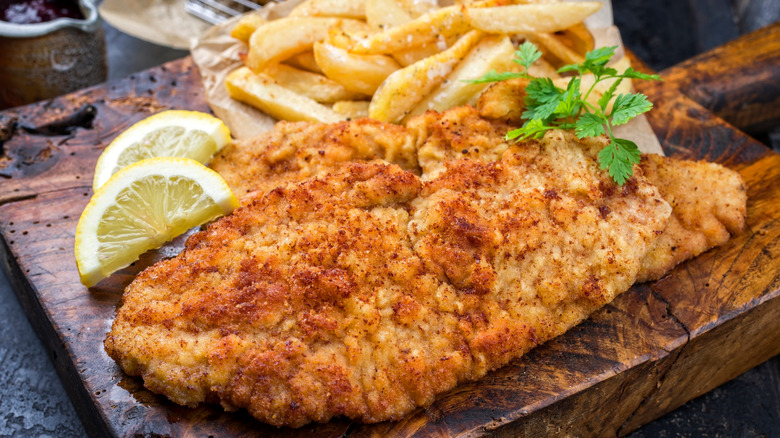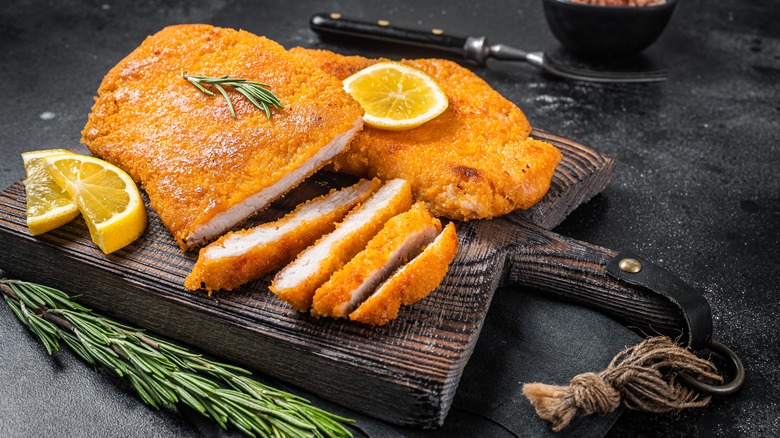What's The Difference Between Schnitzel And Wiener Schnitzel?
From fries and chicken wings to churros and tempura, there are tons of different fried foods to enjoy. There's something so simple yet delicious about eating fried food, but why do we like it so much? According to Pitco, a few things happen in our brain when we eat it, with the initial sensation being the extremely satisfying crunch from the first bite. Furthermore, because fried foods retain more moisture than oven-baked foods, the inside is succulent and packed with flavor. Finally, some dishes, such as fried chicken, also provide a sense of comfort.
Almost every country has its own variation of thinly pounded meat that's coated with flour, eggs, and breadcrumbs, which is then fried to crispy perfection. In Japan, it's known as tonkatsu; in the United States, it's called a chicken fried steak. As straightforward as tonkatsu and chicken fried steak are, Austria's version is known as schnitzel, and it has a few different versions and names depending on the type of meat that is used.
Wiener schnitzel is made with veal; schnitzel is made with pork, chicken, or turkey
It's important to note that there are different variations of schnitzel, with wiener schnitzel being made from veal, wiener schnitzel vom schwein being made from pork, puten schnitzel being made from turkey, and huhner schnitzel being made from chicken (per Visiting Vienna). According to Visiting Vienna, wiener schnitzel is a thinly pounded veal cutlet that's covered in flour, then dipped in beaten egg, and lastly, tossed in breadcrumbs and fried.
This dish is important in Austria, and they even have a national holiday dedicated to it (via BBC). Wiener schnitzel's supposed creation was inspired by a veal cutlet from Italy that an Austrian general found in the 19th century, and once he returned home to Vienna, his chefs made their own rendition. Other forms of schnitzel have been found in early Austrian cookbooks by historians; however, a recipe for this schnitzel type specifically can be found in a cookbook from 1831. The inclusion of "wiener" was a way for Austrians to give themselves credit for their dish so other people wouldn't confuse it with similar breaded cutlet dishes.
BBC also notes that the term "wiener schnitzel" is only legally allowed to be used to describe a breaded veal cutlet, and anything that isn't veal must be labeled accordingly or simply called schnitzel.

